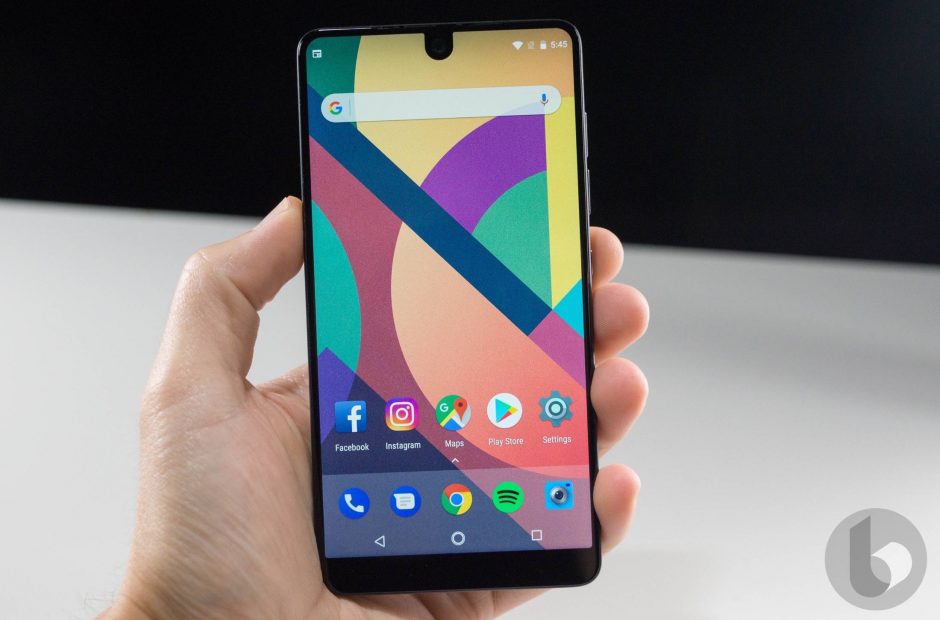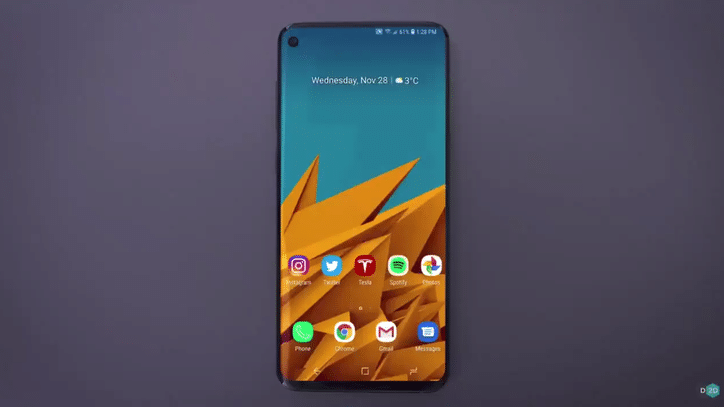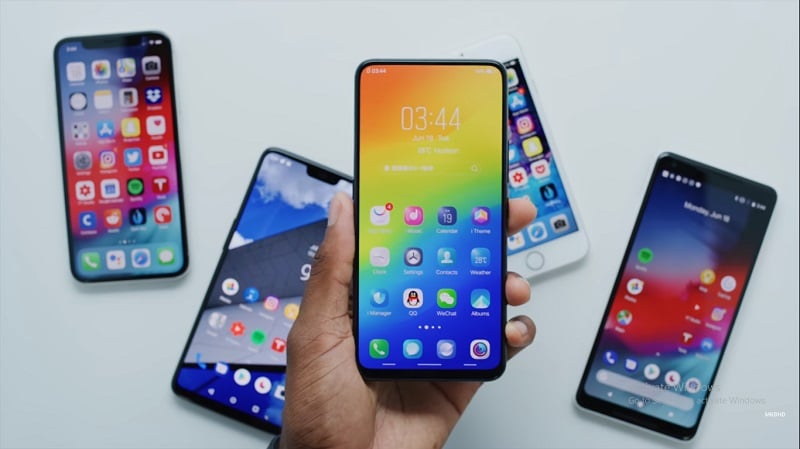The latest battle gripping the smartphone industry is to find a way to remove the dreaded notch.
Many manufacturers are introducing creative ways to remove the notch with the likes of Xiaomi, Vivo, Oppo and ZTE pioneering it.
This has resulted in new inventions like In-display fingerprint scanner and retractable, motorized front cameras.
But why are the consumers insisting for a notch-less design?
How exactly are the smartphone manufacturers solving this problem?
When can we expect a truly, 100% bezel-less smartphone from a major company?
Let’s find out all the answers here.
How it all started?
The first phone to launch with a notched display was the Essential phone designed by Android co-founder Andy Rubin’s Essential Products.
But only after the launch of iPhone X, the world took notice and the word notch started circulating among the general public with respect to a smartphone.

Even though the face unlocks introduced by Apple on iPhone X freed some space for the display to expand at the bottom, there was no option to remove the front camera, earpiece and the sensors.
Apple pushed all these hardware on to the top bezel resulting in a notch design.
Even before iPhone X, Xiaomi had launched the Mi Mix smartphone with an almost bezel-less design, albeit with a bigger chin.
They did this by accommodating the front camera at the bottom chin and when you want to take a selfie, you have to rotate the phone 180-degree.
Consumers started complaining about the large and often intrusive notches up top like in iPhone X and the thick visually non-appealing chin on Mi Mix.
Many people found these design as ugly implementation but as it turned out, every company started shipping phones with notched displays in 2018.
The design aesthetic of smartphones was questioned for bringing in the notch. There needed a better design to remove the notch and make truly bezel-less displays with no bezel on the top and bottom.
The Solutions
1. Vivo Nex S
The Chinese smartphone manufacturer Vivo was the first to come up with an almost bezel-less concept phone called the Vivo Apex in Mobile World Congress 2018. The Vivo Apex implemented an in-display fingerprint scanner and a motorized selfie camera that pops up only when you’re clicking a selfie to mitigate the need for a notch.
Vivo soon launched a commercial variant of the Apex called the Vivo Nex S. Its screen-to-body ratio was still 86.0% only (iPhone X had 82.0%) because of the considerable bezel at the bottom chin. It is assumed that, because it is expensive to fold the OLED panel at the bottom and it is okay to have a chin there, Vivo skipped trimming the bottom bezel.
2. Oppo Find X
Soon Oppo, another Chinese smartphone company launched the Oppo Find X with a unique and genius way of implementing the bezel-less design. They implemented motorized hardware that houses the dual rear camera, front camera and the required sensors.
This motorized hardware pops up automatically when you are unlocking the phone using face ID or when you want to click a picture. Though this was a brilliant design, the moving hardware part is prone to failures in the long term. Even if a small grain of sand comes in its way, it may not open fast.
The screen-to-body ratio of the Oppo Find X was better at 93.8% when compared to iPhone X and Vivo Nex but still, the considerable bottom chin prevent it from becoming a truly, completely bezel-less display.
3. Xiaomi Mi Mix 3
Xiaomi was one of the first company to Introduce bezel-less phone when they launched the first phone in Mi Mix series by positioning the front camera on the chin. The latest edition of this series is the Mi Mix 3.
If the Oppo Find X had a motorized, automatic slider then the Mi Mix 3 has a manual slider that you can move up and down when needed. It works similar to the slider phones of the old where you slide up for the keyboard. Instead, here you slide down to access the front camera.
They did this by using neodymium magnet to lock the screen and the phone body. The slide-out section holds the dual front cameras, earpiece speaker, antenna and the sensors.
This in hindsight is a better implementation than having a motorized moving part. It also has a screen-to-body ratio of a mammoth 93.4%. The bottom bezels are also very thin.
This is a great implementation of shaving the bezels and removing the notch. But as mentioned above, moving hardware is always prone to failure even though Xiaomi guarantees 300,000 slides without failures. Anyway, Kudos to Xiaomi for being innovative and I feel they are inching closer to find the global standard of the truly bezel-less display.
4. ZTE Nubia X
Among all the creative workaround of making a notch-less phone, the most stunning implementation award will go hands down to ZTE. Hold your breath to know their crazy design idea.
The ZTE Nubia X has no front camera at all to take space in the front side of the phone. Instead, it has an extra display on the backside! Yes, you read it right. A second display to act as the viewfinder for the main camera.
So whenever you want to take a selfie, you can turn on the display on the backside to use the main camera or the primary camera to click selfies. Crazy innovation, isn’t it?
The best thing about this implementation is that it has one of the highest screen-to-body ratio (93.6%) on a smartphone without any motorized parts. This solves the problem of ‘chance of failure’ faced by the previously mentioned phones.
Also, in every smartphone, the rear camera or the primary camera is the best camera for clicking pictures as it is having the better sensors. You can use that camera to take impressive looking selfies. Well done ZTE, Well done.
5. Samsung Galaxy S10 (Rumoured)
The 10th edition of Samsung’s flagship smartphone is rumoured to be a technological breakthrough with some crazy implementations to achieve bezel-less display. Even though the S9 and every other phone from Samsung hasn’t had a notch yet, they were having considerable top and bottom bezels.

Samsung is apparently working on a technology where the front camera is placed under the display. They have titled this project as Infinity-O. If successful, this will allow them to push the display all the way up to the top for better screen real estate.
Whether they will be successful in achieving this is still questionable and we have to wait and see what Samsung has in store when they officially launch the Galaxy S10 in early 2019.
Water Drop and Teardrop Notch
Some companies like OnePlus and Oppo has launched smartphones with water drop or teardrop notches. These are notches anyway but they occupy far less space and are not as ugly as a big rectangular notch in Pixel 3 XL and iPhone X.
They have a higher screen-to-body ratio as well because of implementing the notch in this fashion. But still, they are not a solution for removing the notch.
Why do we still have the large bottom bezel?

Even though many companies have launched their version of bezel-less phones, one thing remained constant in all these phones.
The bottom bezel or the chin. Vivo Nex S, Oppo Find X, Mi Mix 3 and ZTE Nubia X had considerable chin bezels. So what’s stopping them from removing the bottom bezel?
The primary reason for this is the way displays work. Usually, the display panels are connected to the phone’s motherboard at the chin. Hence, the design needs some space there and that results in having a bottom bezel.
The iPhone X and the XS are the only phones with the least amount bezel at the chin. Yes, it has a small border but it is the closest we have seen in terms of the bottom bezel.
And they have achieved this by making the OLED display beyond what we see and folding the rest underneath the top layer.
This helps them to connect the display to the motherboard without taking any space in the chin. This is something that is really difficult and expensive to implement.
Also, Apple apparently has the patent for this technology and hence other smartphone companies can’t copy this technique.
Well played, Apple.
Conclusion
A future of 100%, truly bezel-less smartphone is not yet a reality. As we have seen above, smartphone manufacturers are still figuring out how to remove the notch for a fully immersive display. Hopefully, it will be a reality in the near future.
The trends in innovation show that we indeed are on the right path to achieve that.
The big guns like Samsung, Apple and Huawei as well as many other Chinese companies are trying their best to win this battle.
Who will do that first is something we have to wait and see.
Fingers crossed.
